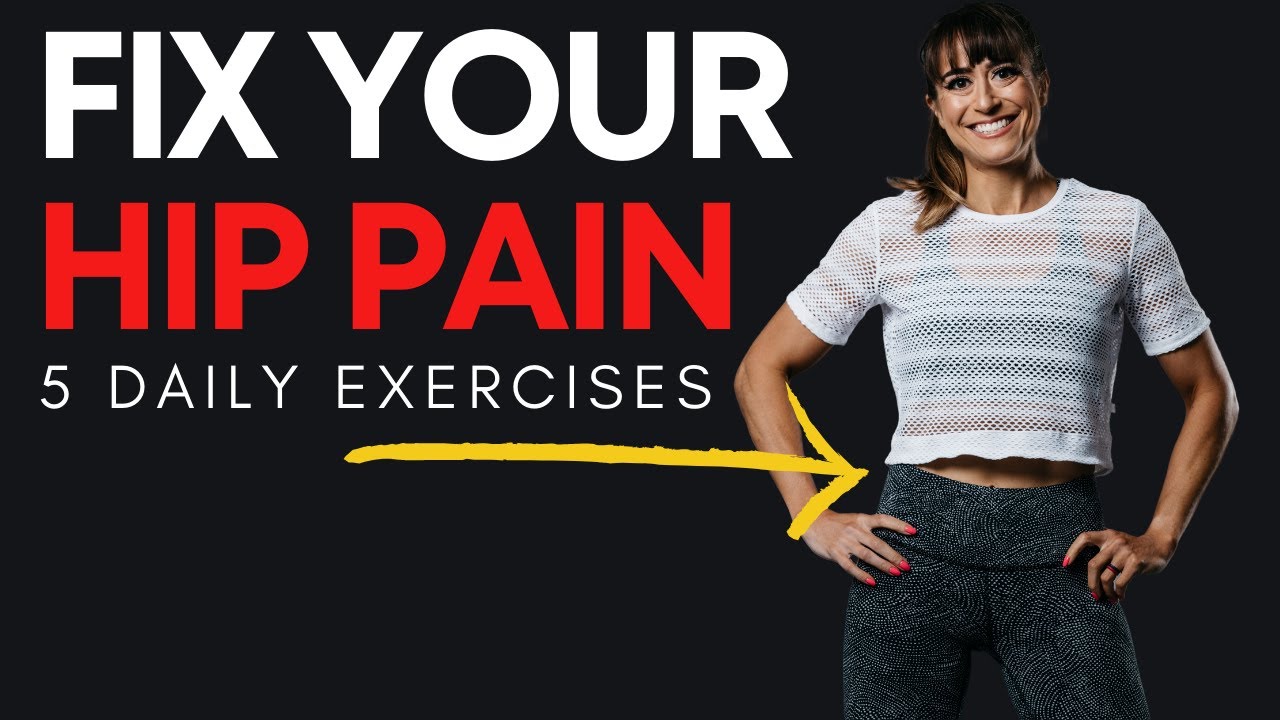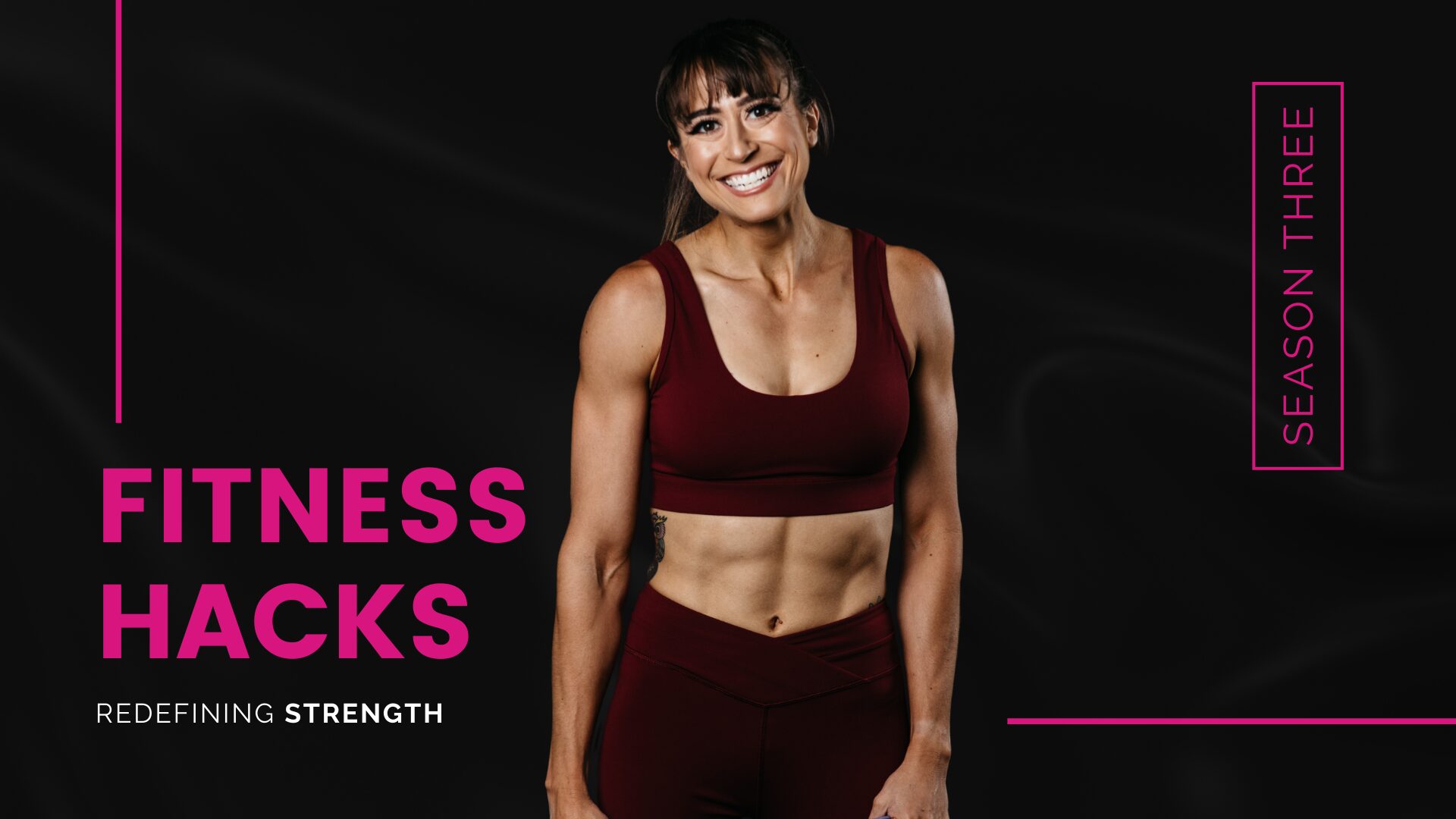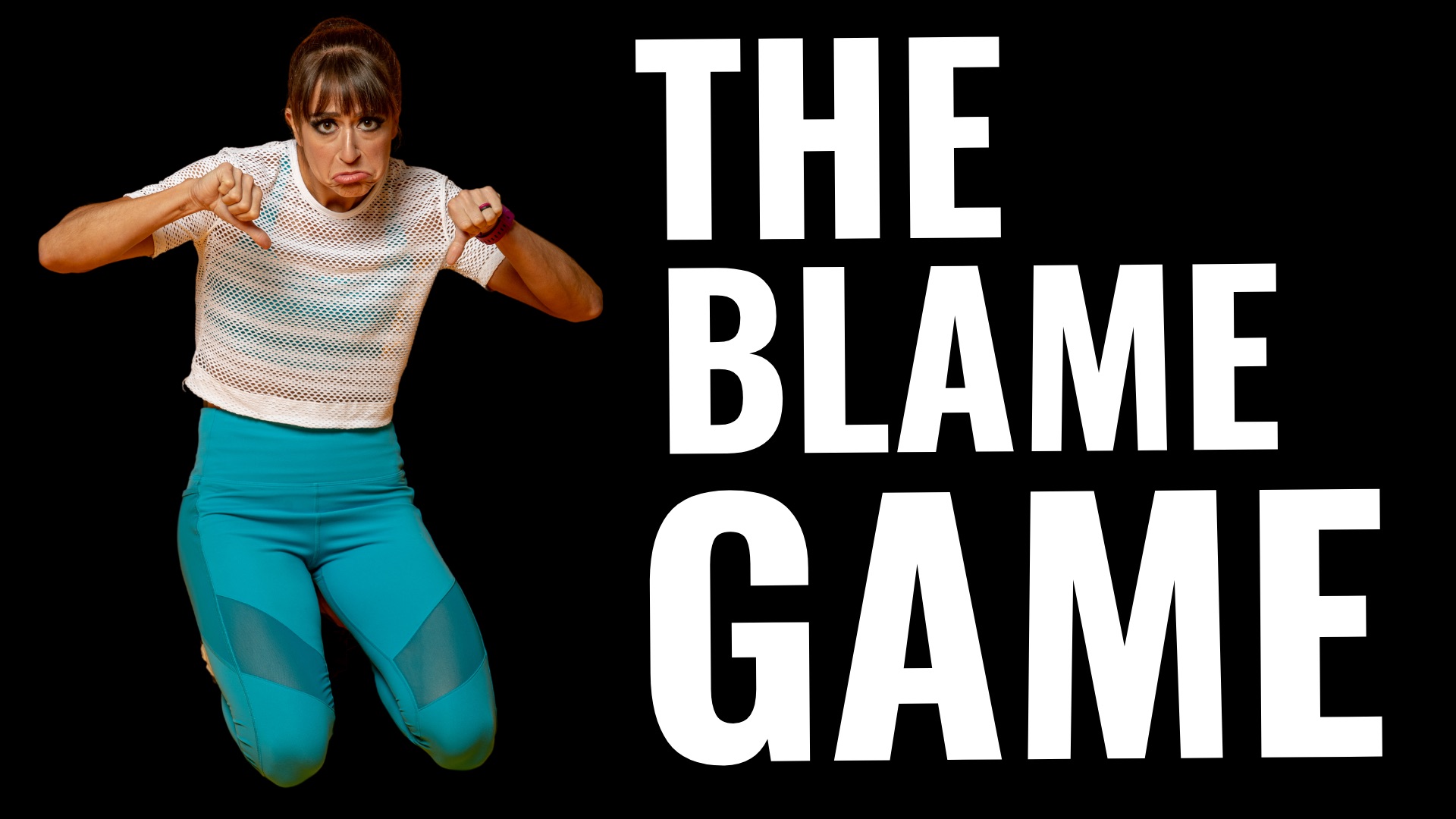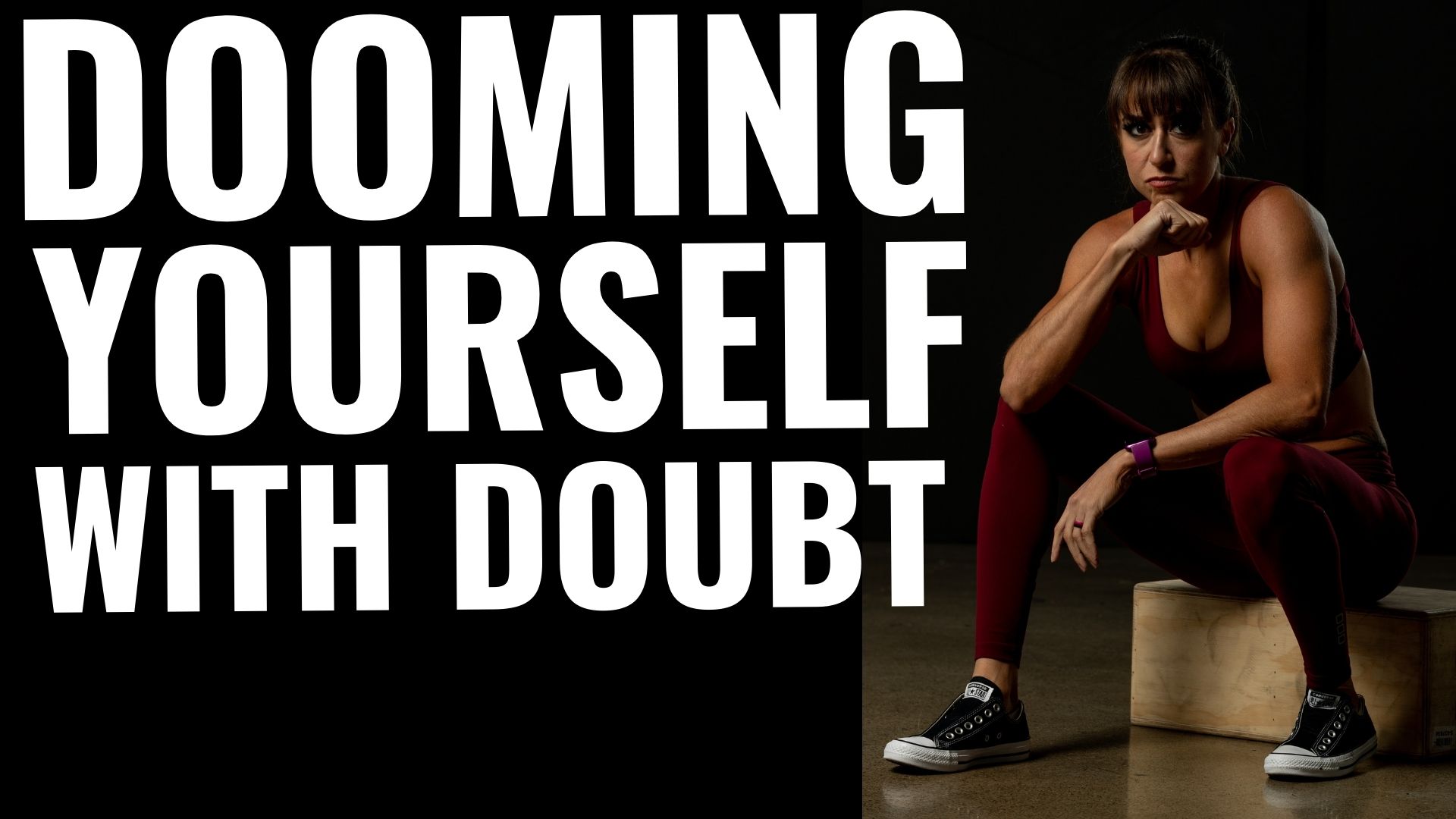
Exercises For Hip Pain RELIEF (5 Daily Hip Pain Moves)
Unfortunately hip pain is an all too common complaint.
And the best rehab is prehab – preventing those injuries before they really build up by recognizing and addressing those “minor” aches and pains.
Too often we simply try to push through a sore hip. We accept a limited range of motion.
We just keep training hard because it “loosens up” as we go or “only hurts at specific times.”
But those little nagging aches and pains are what end up resulting in injuries.
That’s why I wanted to share 5 moves you could include in your warm ups and weekly routine to prevent those annoying little aches and pains from ever resulting in an injury!
Best to act BEFORE the problems really occur!
So what are those 5 prehab moves?
5 Exercises For Hip Pain:
Rectus Femoris Foam Rolling:
The psoas is the sexy hip flexor muscle to talk about, but this hip flexor muscle, which is also a quad muscle, can directly impact both the hip AND the knee so it is a key muscle to pay attention to – it’s the Rectus Femoris.
Tightness of this muscle will not only hinder proper glute activation but lead to lower back, hip and knee issues.
It may be why you had a knee issue on one side and now have hip pain!
So because of the impact this muscle has on multiple joints it is a key muscle to include in your prehab routine.
Usually this muscle becomes short and overactive, which is why it is key you start by relaxing and releasing it through foam rolling.
That will then allow you to better activate your glutes and improve your hip extension and mobility.
If you have had issues or injuries on only one side, you may find you only need to address tightness on one side.
To roll out the Rectus Femoris, place a ball in the middle of your quad. You can also use a roller to reduce the pressure on the muscle. While you want to apply pressure to help the muscle relax as you hold, if the pressure is too much and you tense against it, you won’t benefit. So start with a softer ball or foam roller instead.
Hold and then even tense the muscle and relax as you hold to help it release.
Spend at least 30 seconds on any tight spots you find and hold up to 1 minute.
Piriformis Foam Rolling:
Piriformis issues are all too common these days and are often linked with the fact that we simply spend far too much time seated. Not to mention many of us even choose to do exercise activities, like cycling that still keep us in that seated position!
So it is key we address the fact that this muscle can become tight and shortened and then lead to issues like hip pain and even sciatic compression BEFORE the problems really occur.
That’s why I like to include some foam rolling for the piriformis in my prehab or warm up routines.
A ball works best to really apply more pressure, but you can use a roller especially starting out. You want to find the spot where the top of your back jean pocket would be.
If you use a roller, cross one ankle over the other knee to really help address tightness of the muscle as you lean into that side.
You can then push your knee open and relax out as you hold on the spot.
If you’re using a ball, you may find it helpful to lift and lower the leg as you hold.
Just make sure you breathe and relax as you hold.
Single Leg Hip Thruster:
After starting to relax overactive muscles, you want to start to stretch and work the hip through a full range of motion.
And a great way to do this while also activating our glutes, which are commonly UNDERACTIVE is through activation moves like the Single Leg Hip Thruster with Knee Hug!
Activation moves like this stretch out tight hip flexors through a process called reciprocal inhibition. Basically by engaging your glute to drive your hip into extension you stretch out that shortened hip flexor.
So especially if you’re short on time, you can use this move to stretch and activate all in one!
To do this move, you’ll hug one knee in toward your chest as you set up with your back on a bench. You can look down slightly toward your knees. This cervical flexion can actually help with glute engagement and can help you avoid arching your back.
Use that posterior pelvic tilt to brace your abs as you drive up. Squeeze your glute to extend your hip and avoid arching your lower back to get up higher.
Relax back down and repeat.
Unilateral moves like this are key if you have one side that is weaker or tighter; however, it also makes the exercise harder.
You may find you start with the glute bridge variation of this OR even an 80/20 hip thruster so that you reduce the resistance on that single leg.
You want to make sure your glute is the prime mover and that you don’t feel your hamstrings or quads compensating instead.
Hinged 3-Way Hip Circles:
It’s key we not only work on hip extension but also abduction and even flexion. Basically we want to make sure we mobilize our hip through a full range of motion while building stability through that full ROM.
That’s why this Hinged 3-Way Hip Circle move is so amazing.
You can do a version of this move fully standing and balancing, which is a great option IF you really want to focus on that balance element. You can also do it quadruped.
Even implementing all three over a progression can help you get the best results.
I find using the balance assist and slightly hinged position though really helps to better activate the glute through both the extension and even abduction for most people.
Lean forward against a wall or on a chair or bar for support.
Drive your leg back first. Think less about how high you kick up and almost think about stopping the lift with your glute. Feel yourself squeeze your glute.
Then bend your knee as you lift your leg out to the side. Focus on really feeling that glute lift over rotating away to lift up higher.
Fight to keep your lower leg parallel to the ground. We tend to either want to raise our foot up higher and internally rotate our hip (use the TFL) or externally rotate our hip (which can utilize more piriformis) so really focus on that glute medius.
Then with the knee bent, drive your knee in toward your chest and even round slightly to feel your abs.
We aren’t just mobilizing the hip but also activating muscles to improve our hip stability!
With this move you’re hitting your glute max, medius and even your abs!
Side Lying Series:
The glute medius is key to improving our hip stability and even our glute max activation, which is why it’s essential we include activation exercises for it.
Strengthening this muscle will help us avoid hip pain and even help us lift more and run faster!
One of the simplest but most killer activation series for it, is the Side Lying Series. It is key though that you avoid letting your TFL take over.
Using a slight internal rotation of that lower leg, so turning the toe down toward the ground is key.
Do not let your body rotate open. AND if you’ve had piriformis issues, definitely be careful you don’t start to turn that toe open or externally rotate your hip.
So often we want to allow our TFL or piriformis to compensate for that glute medius.
You’ll then lift the leg up at least 8-10 inches off the bottom leg. This will engage the glute before you even start.
You’ll then run through all, or a combination of side lying moves on one side before switching. Do not rush through or disengage by lowering your leg.
You can do the side lying leg raise, front kicks, back kicks, front to back kicks and then even the bicycle.
All of these hit different aspects of the glute medius AND work it while in both hip flexion and extension.
This series is amazing for runner’s especially using the bicycle because it works on that hip mobility through a full gait motion.
SUMMARY:
The best way to avoid annoying chronic hip pain is to do prehab or those mobility and activation moves to address common postural distortions or previous injuries BEFORE pain adds up.
These moves can be used in your warm up to even help you get more out of your workouts by improving your range of motion and helping you prep proper recruitment patterns BEFORE you lift or run.
If you’re looking to prevent ankle, knee, hip and lower back aches and pains, check out my BOOTY BURNER program!
–> LEARN MORE







